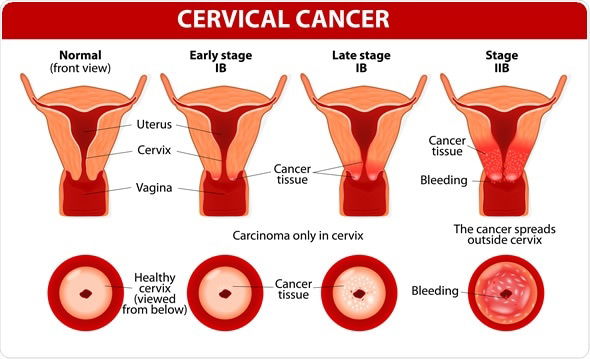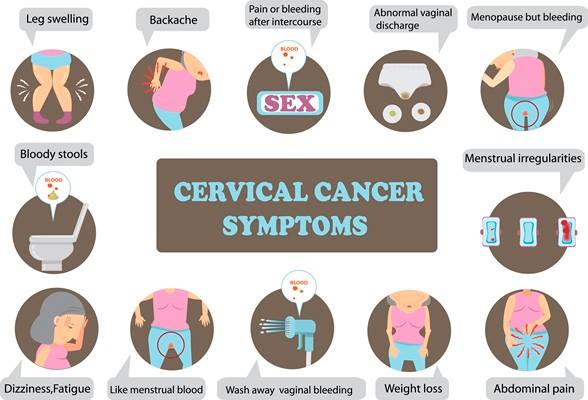Understanding cervical cancer | Awareness month
By Simiyu Nalianya BSc Nutrition

Cervical cancer develops when cells in the cervix starts to grow out of control. These cells can also invade nearby tissues or spread throughout the body. Large collections of cells that grow abnormally are called tumors. Usually, cervical cancer is very slow-growing, although in certain circumstances it can grow and spread quickly.
Cancers are grouped by the cells that they originally formed from. The most common type of cervical cancer is called squamous cell carcinoma. It originates from cells that lie on the surface of the cervix known as squamous cells. Squamous cell cervical cancer makes up about 80% of all cervical cancers.
The second most common form is adenocarcinoma. It comes from cells that make up glands in the cervix. The percentage of cervical cancers that are adenocarcinomas has risen since the 1970s, although no one knows exactly why.

About 3% to 5% of cervical cancers have characteristics of both squamous and adenocarcinomas and are called adenosquamous carcinomas. There are a few other very rare types like small cell and neuroendocrine carcinoma, but they are extremely uncommon. What causes cervical cancer Cervical cancer is much more common in developing nations than it is in developed nations.
Cervical cancer is the 2nd most common cause of cancer death in developing nations, with 84% of all cervical cancer cases occurring in Africa, Latin American and the Caribbean underdeveloped areas. Thou the number is still high, but in the recent statistical data, the number has been declining due to increase in awareness and screening services Risk factors One of the most important risk factors for cervical cancer is infection with a virus called HPV (human papilloma virus). It should be stressed that only a very small percentage of women who have HPV will develop cervical cancer; so simply having HPV doesn't mean that you will get cancer. However, almost all cervical cancers have evidence of HPV virus in them, so infection is a major risk factor for developing it. HPV is a sexually transmitted infection (STI) that is incredibly common in the population. In fact, most college-aged men and women have been exposed to HPV. HPV is the virus that causes genital warts, but having genital warts doesn't necessarily mean you are going to get cervical cancer.
There are different subtypes, or strains, of HPV. Only certain subtypes are likely to cause cervical cancer. Often, infection with HPV causes no symptoms at all, until a woman develops a pre-cancerous lesion of the cervix. Because having an STI is a risk factor for cervical cancer, any risk factor for developing STI’s is also risk factors for developing cervical cancer.

These include:
- Having had multiple male sexual partners.
- Starting to have sexual intercourse at an early age.
- Having had male sexual partners who are considered high risk (they have had many sexual partners and/or began having sexual intercourse at an early age)
- Being diagnosed with any other sexually transmitted diseases (like herpes, gonorrhea, syphilis, or Chlamydia) increases a woman's risk.
- HIV infection (also an STI) is another risk factor for cervical cancer, but for a slightly different reason.
It appears that any condition that weakens your immune system also increases your risk for developing cervical cancer. Conditions that weaken your immune system include HIV, having had an organ transplantation, and Hodgkin's disease.
Another important risk factor for developing cervical cancer is smoking. Smokers are at least twice as likely as non-smokers to develop cervical tumors. Finally, women who live in poverty seem to be at an increased likelihood for developing and dying from cervical cancer. This could be related to higher smoking rates, or perhaps because there are more barriers to getting annual screening exams.
Remember that all risk factors are based on probabilities. Even someone without any risk factors can get cervical cancer. Timely screening and early detection are our best weapons in reducing the number of new cases of cervical cancer.
Also read Preventing cervical cancer
